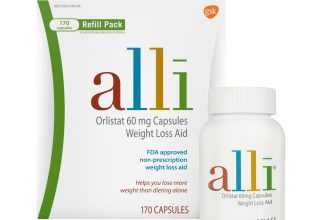Need to understand Isoptin’s mechanism of action quickly? Verapamil hydrochloride, the active ingredient in Isoptin, primarily works by blocking calcium channels in the heart and blood vessels. This action slows the heart rate, reduces blood pressure, and eases the workload on the heart.
Isoptin’s prescribed uses include managing angina (chest pain), hypertension (high blood pressure), and certain types of arrhythmias (irregular heartbeats). However, individual responses vary, and careful monitoring by your physician is crucial. Remember to always follow your doctor’s instructions regarding dosage and administration.
Potential side effects include dizziness, headache, constipation, and nausea. While generally well-tolerated, serious adverse reactions are possible, though rare. Immediately contact your healthcare provider if you experience significant swelling, irregular heartbeat, or severe dizziness. This information provides a general overview; your physician possesses the expertise to tailor treatment to your specific needs.
- Isoptin (Verapamil Hydrochloride): A Detailed Overview
- Understanding Verapamil’s Mechanism of Action
- Isoptin’s Approved Indications and Uses
- Angina Pectoris
- Hypertension
- Supraventricular Tachycardia
- Other Uses
- Dosage and Administration Guidelines for Isoptin
- Common Side Effects and Potential Risks Associated with Isoptin
- Serious Side Effects Requiring Immediate Medical Attention
- Less Common but Significant Side Effects
- Drug Interactions: Medications to Avoid with Isoptin
- Beta-Blockers and Isoptin: A Risky Mix
- Grapefruit Juice and Isoptin: A Cautionary Tale
- Other Medications Requiring Caution
- Consult Your Doctor
- Isoptin and Pregnancy/Breastfeeding: Safety Considerations
- Pregnancy
- Breastfeeding
- Specific Recommendations
- Patient Education and Monitoring for Isoptin Therapy
- Managing Side Effects
- Important Precautions
- Lifestyle Adjustments
- Regular Check-ups
- Emergency Contact
Isoptin (Verapamil Hydrochloride): A Detailed Overview
Isoptin, containing verapamil hydrochloride, is a calcium channel blocker primarily used to treat hypertension and angina. It works by relaxing blood vessels, lowering blood pressure, and reducing the heart’s workload.
Consult your doctor before starting Isoptin, especially if you have heart problems, liver or kidney disease, or are taking other medications, including grapefruit juice (which can interact negatively).
Common side effects include headache, dizziness, constipation, and nausea. More serious, though rare, side effects include heart block and low blood pressure. Seek immediate medical attention if you experience chest pain, severe dizziness, or irregular heartbeat.
Dosage varies depending on the condition being treated and individual patient factors. Your doctor will determine the appropriate dose and frequency. Always follow your doctor’s instructions precisely.
Isoptin comes in different forms, including tablets and extended-release capsules. The extended-release formulation provides a longer-lasting effect. Ask your pharmacist about the specific form you’ve been prescribed.
Regular blood pressure monitoring is necessary while taking Isoptin. Report any changes in your health status to your doctor promptly. This medication can interact with many other drugs; be transparent with your doctor about all your medications and supplements.
Remember, Isoptin is a prescription medication. Never share it with others and always store it as instructed on the label. Proper storage ensures its efficacy and prevents accidental ingestion.
Understanding Verapamil’s Mechanism of Action
Verapamil works primarily by blocking calcium channels. Specifically, it targets L-type voltage-gated calcium channels found in the heart and blood vessels.
This calcium channel blockade reduces the influx of calcium ions into cardiac muscle cells. This, in turn, slows down the heart rate and reduces the force of heart contractions, lowering blood pressure.
In the smooth muscle of blood vessels, verapamil’s action leads to vasodilation, further contributing to the reduction in blood pressure. This vasodilation occurs because reduced calcium entry relaxes the smooth muscle, widening the blood vessels.
The precise effects depend on factors such as the dosage and the individual’s physiological state. Consult your doctor for personalized advice regarding Verapamil’s use.
Therapeutic benefits stem from this dual action on the heart and blood vessels. It’s this mechanism that makes Verapamil effective for treating conditions like hypertension and angina.
Isoptin’s Approved Indications and Uses
Isoptin, containing verapamil hydrochloride, treats several cardiovascular conditions. Doctors primarily prescribe it for angina (chest pain), hypertension (high blood pressure), and supraventricular tachycardias (rapid heartbeats originating above the ventricles).
Angina Pectoris
Isoptin helps manage angina by relaxing blood vessels, increasing blood flow to the heart, and reducing the heart’s workload. This eases chest pain and improves exercise tolerance. Dosage and frequency depend on individual needs and response to treatment.
Hypertension
For hypertension, Isoptin lowers blood pressure by relaxing blood vessels. This reduces the force of blood against artery walls. It’s often used in combination with other medications for optimal blood pressure control. Regular monitoring of blood pressure is crucial.
Supraventricular Tachycardia
Isoptin slows rapid heart rates by affecting the electrical pathways in the heart. It is effective in managing paroxysmal supraventricular tachycardia (episodes of rapid heartbeat) and other similar conditions. A physician should carefully evaluate the appropriateness of Isoptin for this use.
Other Uses
Note: While not primary indications, Isoptin may also be used off-label for certain migraine headaches and Prinzmetal’s angina (a specific type of chest pain).
Disclaimer: This information is for educational purposes only and does not constitute medical advice. Always consult a healthcare professional for diagnosis and treatment of any medical condition. They will determine the appropriate dosage and monitor your progress.
Dosage and Administration Guidelines for Isoptin
Isoptin dosage varies significantly depending on the specific condition being treated and the patient’s individual characteristics. Always follow your doctor’s instructions precisely. Never adjust your dosage without consulting your physician.
For angina pectoris, initial doses typically range from 40 to 120 mg daily, administered in divided doses. Your doctor may gradually increase this based on your response and tolerance. Sustained-release formulations allow for less frequent dosing.
In hypertension management, starting doses often begin at 80 to 120 mg daily, again divided into doses, with potential upward adjustments as determined by your physician and blood pressure monitoring.
For supraventricular tachyarrhythmias, intravenous administration may be used under strict medical supervision. The exact dosage and rate of administration will be determined by the treating physician based on the patient’s condition and response.
Isoptin is available in various forms, including immediate-release tablets, sustained-release tablets, and an intravenous solution. Your doctor will prescribe the most appropriate formulation for your needs.
| Administration Route | Typical Dosage Range | Important Notes |
|---|---|---|
| Oral (Immediate-Release) | 40-120 mg daily (divided doses) | Take with food to minimize gastrointestinal upset. |
| Oral (Sustained-Release) | 120-480 mg daily (once or twice daily) | Do not crush or chew sustained-release tablets. |
| Intravenous | Variable, determined by physician | Administered under close medical supervision. |
Potential side effects include headaches, dizziness, constipation, and edema. Report any unusual or concerning side effects to your doctor immediately. This information is not exhaustive, and further details should be obtained from your physician or pharmacist.
Common Side Effects and Potential Risks Associated with Isoptin
Isoptin, containing verapamil hydrochloride, can cause various side effects. Common ones include headache, dizziness, nausea, and constipation. These usually are mild and resolve on their own. However, some individuals experience more severe reactions.
Serious Side Effects Requiring Immediate Medical Attention
Seek immediate medical help if you experience symptoms such as: severe dizziness or fainting, irregular heartbeat, swelling in your ankles or feet (indicating fluid retention), shortness of breath, chest pain, or yellowing of your skin or eyes (jaundice). These could signal potentially serious problems. Always inform your doctor about all medications you are taking, including over-the-counter drugs and herbal remedies, to avoid dangerous interactions.
Less Common but Significant Side Effects
Less frequent but still important side effects include giddiness, fatigue, and a slowed heart rate (bradycardia). Your doctor may adjust your dosage or prescribe other medications to manage these side effects. Regular check-ups are crucial to monitor your response to Isoptin.
Drug Interactions: Medications to Avoid with Isoptin
Avoid combining Isoptin (verapamil hydrochloride) with certain medications to prevent dangerous interactions. Specifically, concurrent use with other calcium channel blockers, like diltiazem or nifedipine, significantly increases the risk of dangerously low blood pressure and heart rate. This combination can lead to serious health consequences.
Beta-Blockers and Isoptin: A Risky Mix
Combining Isoptin with beta-blockers (like metoprolol or atenolol) can also cause excessive slowing of the heart rate (bradycardia) and potentially lead to heart block. This interaction requires careful monitoring by your physician.
Grapefruit Juice and Isoptin: A Cautionary Tale
Grapefruit juice inhibits the enzymes that metabolize Isoptin. This inhibition elevates Isoptin levels in your bloodstream, potentially leading to an overdose. Therefore, you must avoid grapefruit juice while taking Isoptin.
Other Medications Requiring Caution
Digoxin: Isoptin can increase the blood levels of digoxin, increasing the risk of digoxin toxicity. Careful monitoring is crucial. Rifampin: Rifampin, an antibiotic, can speed up Isoptin metabolism, potentially reducing its effectiveness. Certain antidepressants, specifically those belonging to the MAOI class and some SSRIs, may interact negatively with Isoptin. Always inform your doctor about all medications you are taking, including over-the-counter drugs and supplements, before starting Isoptin.
Consult Your Doctor
This information is not exhaustive, and individual reactions can vary. Always consult your doctor or pharmacist before combining Isoptin with any other medication to ensure your safety and the effectiveness of your treatment. They can assess your specific circumstances and provide personalized guidance.
Isoptin and Pregnancy/Breastfeeding: Safety Considerations
Isoptin (verapamil hydrochloride) use during pregnancy and breastfeeding requires careful evaluation of risks and benefits. Consult your doctor immediately before using Isoptin if you are pregnant, breastfeeding, or planning pregnancy.
Pregnancy
Studies show Isoptin can cross the placenta. Potential risks to the developing fetus include:
- Bradycardia (slow heart rate)
- Hypotension (low blood pressure)
- Respiratory depression
- Hypoglycemia (low blood sugar)
Your doctor will weigh these potential risks against the benefits of using Isoptin for your condition. Alternative treatments may be considered. Close monitoring is vital if Isoptin is used during pregnancy.
Breastfeeding
Verapamil is excreted in breast milk. The amount transferred to the infant is generally low, but potential risks for the breastfeeding baby include those mentioned above. Factors such as the mother’s dosage and the baby’s age can influence the level of risk.
Monitoring the infant for any adverse effects, especially bradycardia, is recommended. Your doctor may recommend alternative treatment or close observation if Isoptin use is unavoidable while breastfeeding.
Specific Recommendations
- Always inform your healthcare provider about all medications you’re taking, including Isoptin, before becoming pregnant or during pregnancy and breastfeeding.
- Discuss all potential risks and benefits with your doctor before starting, stopping, or changing your Isoptin dosage.
- Follow your doctor’s instructions carefully regarding dosage and frequency.
- Regularly monitor your health and your baby’s health (if applicable) for any adverse effects.
Remember, this information is for educational purposes only and does not constitute medical advice. Always consult your physician or other qualified healthcare provider for any questions or concerns about Isoptin use during pregnancy or breastfeeding.
Patient Education and Monitoring for Isoptin Therapy
Understand your Isoptin prescription completely. Ask your doctor or pharmacist any questions you have about dosage, side effects, and potential drug interactions.
Managing Side Effects
Common side effects include dizziness, headache, constipation, and nausea. Drink plenty of fluids and eat a high-fiber diet to mitigate constipation. If dizziness is severe, contact your doctor. Report any unusual or persistent side effects immediately.
- Dizziness: Avoid driving or operating machinery until you know how Isoptin affects you.
- Constipation: Increase your fiber intake and water consumption.
- Headache: Over-the-counter pain relievers may help, but consult your doctor if headaches are severe or persistent.
- Nausea: Take Isoptin with food to lessen nausea.
Important Precautions
Isoptin can interact with other medications. Provide your doctor with a complete list of all medications, supplements, and herbal remedies you take. Regular blood pressure monitoring is vital. Keep scheduled appointments for checkups.
- Grapefruit Juice: Avoid grapefruit juice, as it can significantly affect Isoptin’s metabolism.
- Beta-blockers: Combining Isoptin with beta-blockers requires careful monitoring by your physician.
- Blood Pressure Monitoring: Monitor your blood pressure regularly as directed by your doctor. Keep a record of your readings.
Lifestyle Adjustments
Maintain a healthy lifestyle. This includes regular exercise, a balanced diet, and stress management techniques. These lifestyle choices can contribute to better overall health and medication effectiveness.
Regular Check-ups
Attend all scheduled appointments with your doctor for regular blood pressure checks and to discuss any concerns. This allows for ongoing monitoring and adjustments to your treatment plan as needed.
Emergency Contact
Know when to contact emergency services. Seek immediate medical attention if you experience chest pain, shortness of breath, or severe allergic reactions (such as swelling of the face, lips, or tongue).










